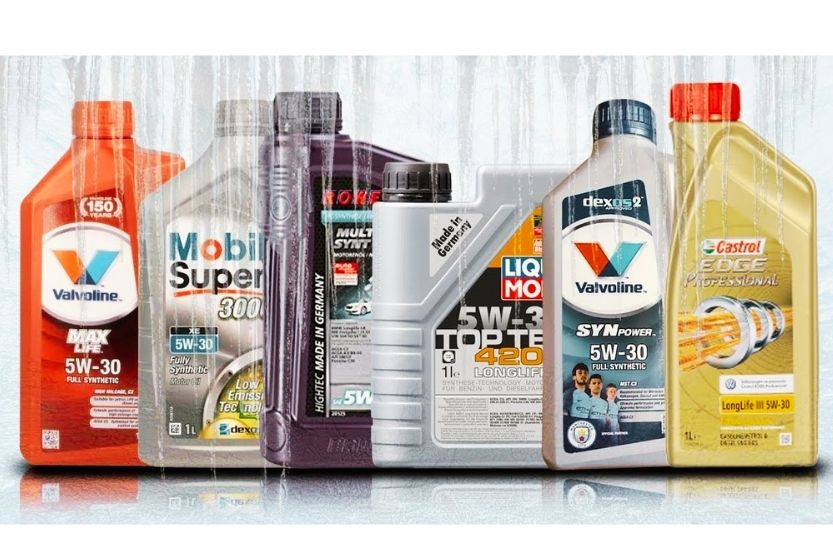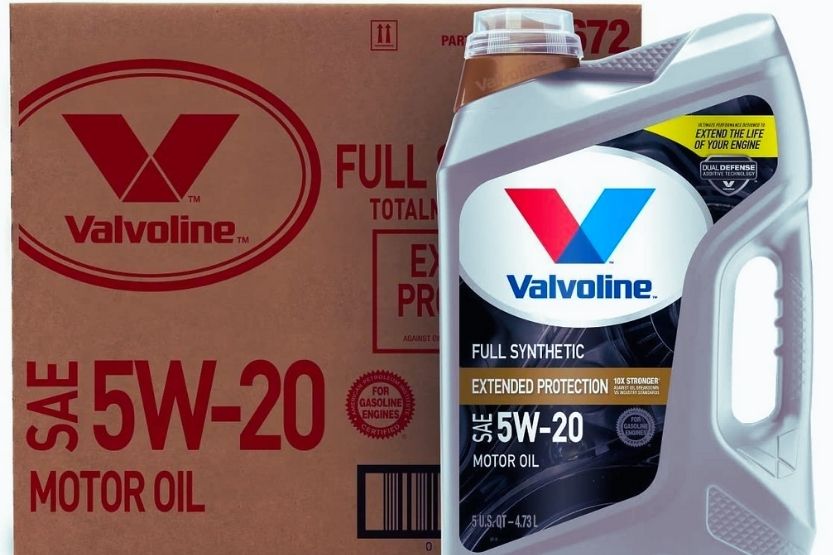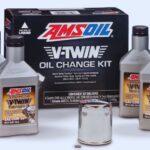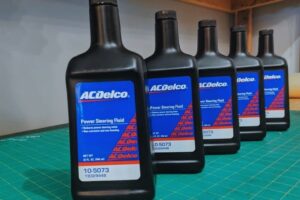If you’re not a vehicle enthusiast, you probably aren’t familiar with the terms 5w-20 oil and 5w-30 oil. However, if you own a motorcycle, car, or truck, chances are you know about them and are wondering how to use them for your vehicle correctly.
When comparing the usage for 5w-20 to 5w-30, most people use the latter because of its inherent viscosity. With this consistency, 5w-30 oil breaks down slower and is more resistant to heat, thus protecting the vehicle from the impact of friction.
Even then, knowing the difference between these two oil types is better before putting your choice into your car or truck. So, in this article, let’s discuss the varying attributes of these oil types and when to use which oil.
Can You Use 5W 20 Instead of 5W 30?

Regularly changing your car’s oil is essential in keeping your vehicle in top shape. This allows for proper lubrication to reduce the effect of friction and prevent your engine from heating up.
Oil changes are also a way to keep your engine free from debris, sludges, and dirt that may clog things up and slow down your engine. With that, many manufacturers and mechanics recommend 5w-20 and 5w-30 motor oil grades because of their inherent versatility.
Most drivers and mechanics use 5w-30 instead of 5w-20 because of the quality. Not only does the viscosity guarantee protection for the moving internal parts of your vehicle, but its chemical reaction to changing temperatures is more manageable.
Both Work Well with Various Vehicle Engines
Then again, these oils are most commonly used compared to other types because they work with a wide range of vehicle engines and even adapt to external changes.
Use 5w-30 Motor Oil for Warmer Climates
We recommend using 5w-30 motor oil for warmer climates or during warmer seasons to simplify the idea.
On the other hand, we use 5w-20 motor oil for colder climates or during colder seasons. This is because these types of motor oil change in consistency and viscosity depending on the surrounding temperature.
Without following this requirement, the performance and efficiency of your engine may be compromised. That said, you should avoid going against the recommendation of the car’s manufacturer.
Additives Improve Lubricating Power of Oils
Another reason why most manufacturers and mechanics choose 5w-30 and 5w-20 is because of the additives in the formulation. Oil manufacturers utilize chemical additives in automotive oil to improve the lubricating performance of the oil in the issue.
Furthermore, additives in oils have the following effect:
- Eliminate engine debris and deposits from internal components,
- Prevent corrosion or rust within the engine, and
- Keep the oil from breaking down as severely as it would otherwise due to oxidation or high temperatures, among other things.
What Is the Difference Between 5w-30 and 5w-20 Oil?
Then again, what is the difference between 5w-30 and 5w-20? Generally, the main thing we notice is about 5w-20 and 5w-30 oil. That said, we presume that since 5w-30 has a thicker consistency, it is more effective in protecting our engine and internal parts from impact and friction.
Factors to Consider When Choosing Between 5w-20 and 5w-30 Oil

With this taken into account, let’s discuss the two main factors:
- Kinematic Oil Viscosity, and
- Climate Suitability.
1. Kinematic Oil Viscosity
Internal Resistance of a Fluid to Flow
To those who are not yet familiar, kinematic oil viscosity is the internal resistance of a fluid to move or flow, significantly when affected by gravity. It is also measured through the fluid’s ability to move through standard passages like piping when exposed to normal temperatures.
The slower the oil moves, then the denser it is. Thus, a higher SAE numerical code will be given based on the Society of Automotive Engineers standards.
5w30 Is Thicker Than 5w20 Oil
Another way to describe viscosity is to use the terms “thin” or “thick.” In this case, 5w-30 is relatively thicker than 5w-20 oil, while 5w-20 oil is thinner than 5w-30 oil.
Follow the Manufacturer’s Manual
That being said, paying attention to the particular motor oil grade your car’s manufacturer indicates in the manual is essential. Some cars and trucks are designed to use specific motor oil to ensure good fuel economy and ideal driveability.
2. Climate Suitability
W Stands for Winter
When you encounter a motor oil with numbers and a post-assigned letter “W,” this serves as a code in the chemical industry. Each number indicates their observed properties under varying temperatures, while the letter “W” stands for “winter.
This is because the oil’s effectiveness ultimately depends on the weather and surrounding temperature it will be exposed.
5w-30 vs. 10w-30 Motor Oil
That said, for warmer areas or throughout the warmer seasons, we use 5w-30 motor oil instead of 10w-30. This is because the naturally thicker consistency of 5w-30 oils means that the oil breaks down slower despite the heat.
Colder Areas Require 5w-20 Motor Oil
For colder areas or throughout the winter seasons, we use 5w-20 motor oil. The reduced density and thinner consistency of 5w-20 oil prove more economical amidst the cold because it can provide protection and enhanced circulation without straining the engine and the parts.
The main reason you should always follow car manufacturer recommendations for your motor oil is that the vehicle was mainly designed to perform for a specific climate. Suppose you use 5w-30 oil for cars suited for colder temperatures.
In that case, you may experience some drag in the valves, crankshafts, and pistons. Your vehicle may struggle, leading to more maintenance issues in the long run. So, it is best to avoid that kind of situation.
Then again, if you look into it, you can see that both of these motor oil grades aren’t that different, except for these two factors. So, what gives?
Again, 5w-20 vs. 5w-30 oil – which is better? The thicker 5W30 motor oil performs better than 5W20 motor oil at higher temperatures. Plus, it is tougher and does not easily break down.
Frequently Asked Questions

Let’s go over some FAQs about these products:
Why Are 5w-20 Oil and 5w-30 Oil Both in the Market?
Despite their difference, these oils are both in the automotive market, given their versatility.
Not only do manufacturers, mechanics, and drivers consider them for their use across a wide range of temperatures and climates, but you can use them interchangeably without drastic adverse effects on your engine.
Having them both available in the market allows users to make the most out of their vehicle, wherever they travel or drive.
Can I Put 5w-20 Oil into a 5w-30 Car?
You can use these motor oils interchangeably since they are versatile. However, there is a reason why car manufacturers indicate a particular motor oil grade in the recommendations, and it is for efficiency and sustainability.
It also bears noting that these oils share a similar winter rating. While this may be the case, changes in the temperature may affect the current viscosity.
Suppose your oil becomes thicker, and your vehicle is not designed for it. In that case, it may take a toll on your fuel economy, as well as on your horsepower output.
Other formulations of these products also come with more additives that may also affect the performance of your car or truck.
Can I Mix 5w-20 Oil and 5w-30 Oil?
The short answer to this is yes. It is allowable and workable to achieve more enhanced efficiency. If you prefer to combine these motor oils, you can mix them as long the manufacturers are the same. Or choose products with an equivalent API service level certified by the American Petroleum Institute.
Best 5w-30 and 5w-20 Motor Oils
Provide Adequate Protection for Engines
Now that we have gone over the factors to consider for the 5w-20 vs. 5w-30 Oil comparison, what we must ensure with our choice is the fact that the oil can adequately protect our car or truck engines.
Motor Oil Grade Varies with Temperature Changes
One thing to note is that while they vary in viscosity, the grading may exhibit temperature changes. For example, when conditions are colder, the viscosity of both oils becomes similar, while 5w-30 becomes more viscous at higher temperatures reaching up to 100° C.
Also, if your car’s engine generally requires 5w-20, then it may perform differently if you use 5w-30 in place of it.
Choose 5w20 for Colder Temperatures and 5w30 for Warmer Temperatures.
The best thing to remember is to choose 5w20 for colder and 5w30 for warmer temperatures.
This way, you can be more economical and secure with the results you get from the tasks. That said, if you drive in areas with normal temperatures, you can choose either of the two or even both.
If you’re looking for the best motor oil for your cars and trucks, there are a few things to keep in mind. Even if there is slight variation in the amount of protection provided by a 5W-30 and a 5W-20 oil, the viscosity, and consistency of each somewhat differ.
Because of the adaptability of motor oils, both 5W-30 and 5W-20 oils are equally good at keeping your engine running smoothly, no matter the weather or season.
Conclusion: 5w-20 vs. 5w-30 Oil: Which Is Better?
This article has discussed the differences between the two types of motor oil in this 5w-20 vs. 5w-30 Oil comparison. You can choose between the said products while considering the availability and your location’s climate.
That said, you won’t have to worry much if you live in an area without extreme temperatures and weather.
So, we hope this quick overview proves helpful, and may you find the motor oil that works best for you!
Read next:


![Magnaflow Vs Flowmaster Exhaust System [Which Is Better?] magnaflow vs flowmaster](https://roadsumo.com/wp-content/uploads/2021/05/magnaflow-vs-flowmaster-150x150.jpg)





![Read more about the article How Much Is an Oil Change at Valvoline? [Valvoline Oil Change Prices]](https://roadsumo.com/wp-content/uploads/2021/05/how-much-is-an-oil-change-at-Valvoline-300x200.jpg)
